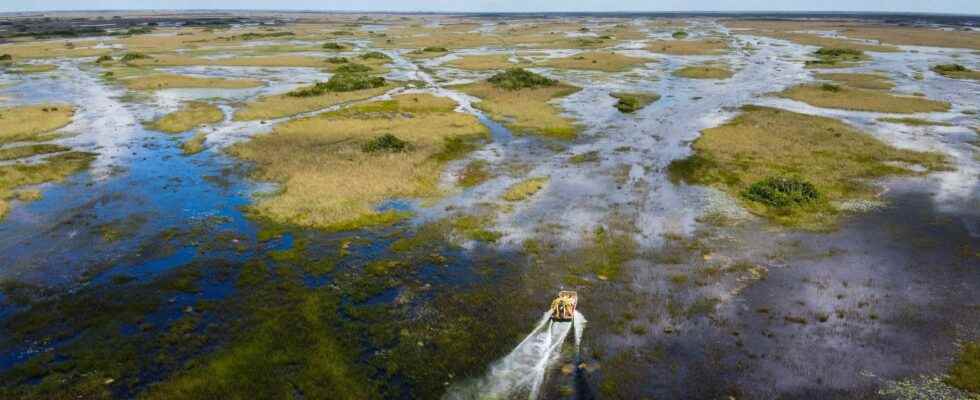The sea is rising and the sky is falling on their heads. Between rising waters and more frequent tropical rains – not to mention hurricanes – Floridians are sandwiched by climate change. Up and down! But the Democratic mayor of Miami Beach, where 95,000 inhabitants live (and more than 10 to 15 million visitors a year), is hardly worried. “No challenge is insurmountable: after all, Miami Beach is an artificial island built on limestone and swamps” remarks Dan Gelber in his office, before detailing the measures of the municipality in the face of the phenomenon of rising waters, which infiltrate through the limestone subsoils and, at high tides, flood part of the road – and not necessarily in the immediate vicinity of the coast.
“We have been devoting substantial sums for years to raise our roads and protect our shores, underlines the elected official. In addition, we are multiplying the pumping systems in order to evacuate the flood water while recycling it for the Finally, we legislate: depending on the location, the foundations of new constructions must be raised by 60 to 120 centimeters compared to the existing building.”
A natural asset: the Everglades
With a 20 centimeter rise in sea level in Florida since 1950, almost no one denies the evidence of rising waters. And everyone makes arrangements. In Palm Beach, for example, the director of the Norton Museum of Art, Ghislain d’Humières, explains that “like all Florida institutions, the [sienne] has a plan against floods”. Example: the foundations of the future extension of the museum will be reinforced twice. “In several decades, my successors must have the possibility of adding a floor to the building if they wish” , notes this Frenchman who has worked in California (“where earthquakes can kill instantly”) and in Oklahoma (“where deadly tornadoes form in fifteen minutes”). “In Florida, he adds, we at least have time to prepare for the rising waters…”
Above all, the region can count on a natural asset: the Everglades, a swamp populated by alligators and waders. For seventy-five years, this ecosystem has suffered the onslaught of man. In order to supply the urban centers located on both sides of Florida, the water of this natural reservoir as large as Brittany was drained to the east (Tampa) and the west (Miami), which prevented its natural flow. , from north to south. In 2000, under the presidency of Bill Clinton, an ambitious rescue program for the Everglades, planned over thirty years – and subdivided into sixty projects – was voted on. “Extremely expensive, it is the most ambitious ecological project in the world”, welcomes Kelly Cox, of the famous environmentalist NGO Audubon. Funded equally by Washington (federal capital) and Tallahassee (capital of Florida), it has never been questioned by successive Republican governors.
“Two decades after its launch, the rehabilitation of the Everglades is beginning to give its first positive effects, already measurable in the return of certain species of birds and the improvement of biodiversity”, continues, in Miami, Kelly Cox, whose office is adorned with a map of the region. The improvement also concerns humans. “Not only are the Everglades able to absorb rainwater better than any pumping system, but its coastal marshes and mangrove forests also act as a buffer that protects people from sea level rise and dampens strong winds. Faced with the disruption of nature, nothing like nature itself!
